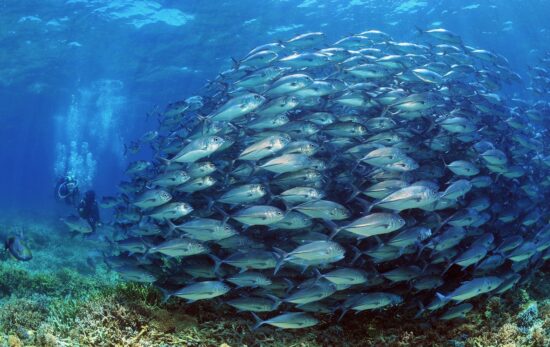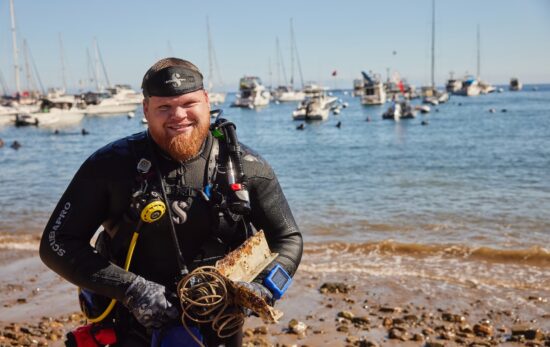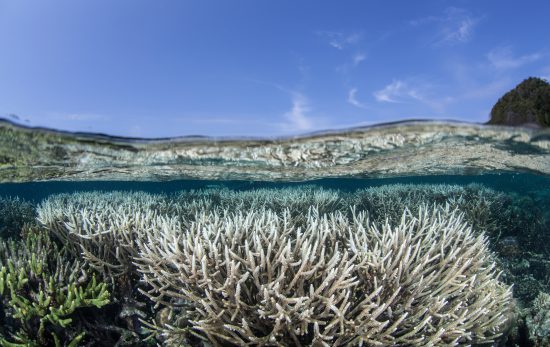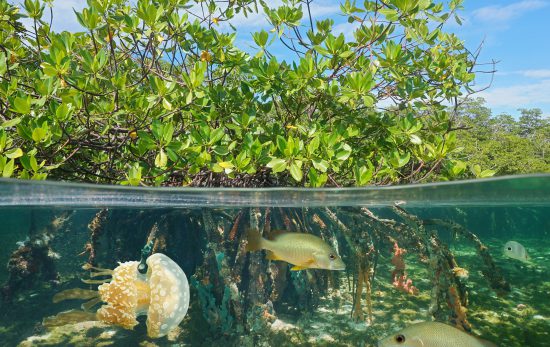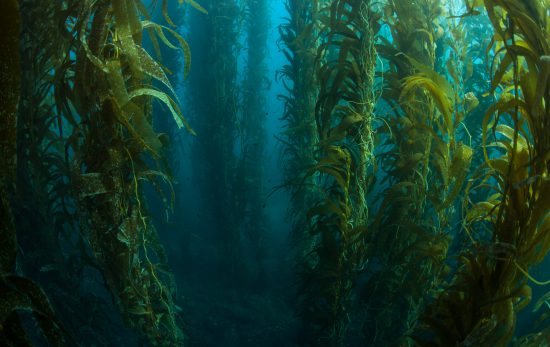Let’s dive right in – too much of the heat-trapping gasses, like carbon dioxide, are in Earth’s atmosphere. This leads to global warming and climate change, negatively affecting the ocean. The most recent IPCC report states that the amount of global net human greenhouse gas (GHG, aka the heat-trapping gasses) emissions in 2019 was 12% higher than in 2010 and 54% higher than in 1990. Naturally, this is a problem, because the changes cause weather extremes, such as larger storms, droughts, marine heat waves and other ocean impacts. In turn, marine and terrestrial ecosystems, homes, and more have been negatively impacted. Perhaps, you have witnessed or even experienced some of these effects.
How can we avoid the worst effects of climate change? Simply put, we need to drastically reduce and stop emitting carbon dioxide. We can do this by replacing fossil fuels with renewable energy sources to produce electricity and power our transportation, creating and living in sustainable communities, and protecting the environment. This transition is complex. Think of all the cars, airplanes, and ships that need to stop using gas- globally! However, there are tools available to accomplish this. One such tools is carbon offsets. Companies and individuals can use carbon offsets to reduce their carbon footprint and to help contribute to climate solutions and therefore protect the ocean. Continue reading to learn more about carbon offsets and two of the best carbon offset programs for ocean lovers!
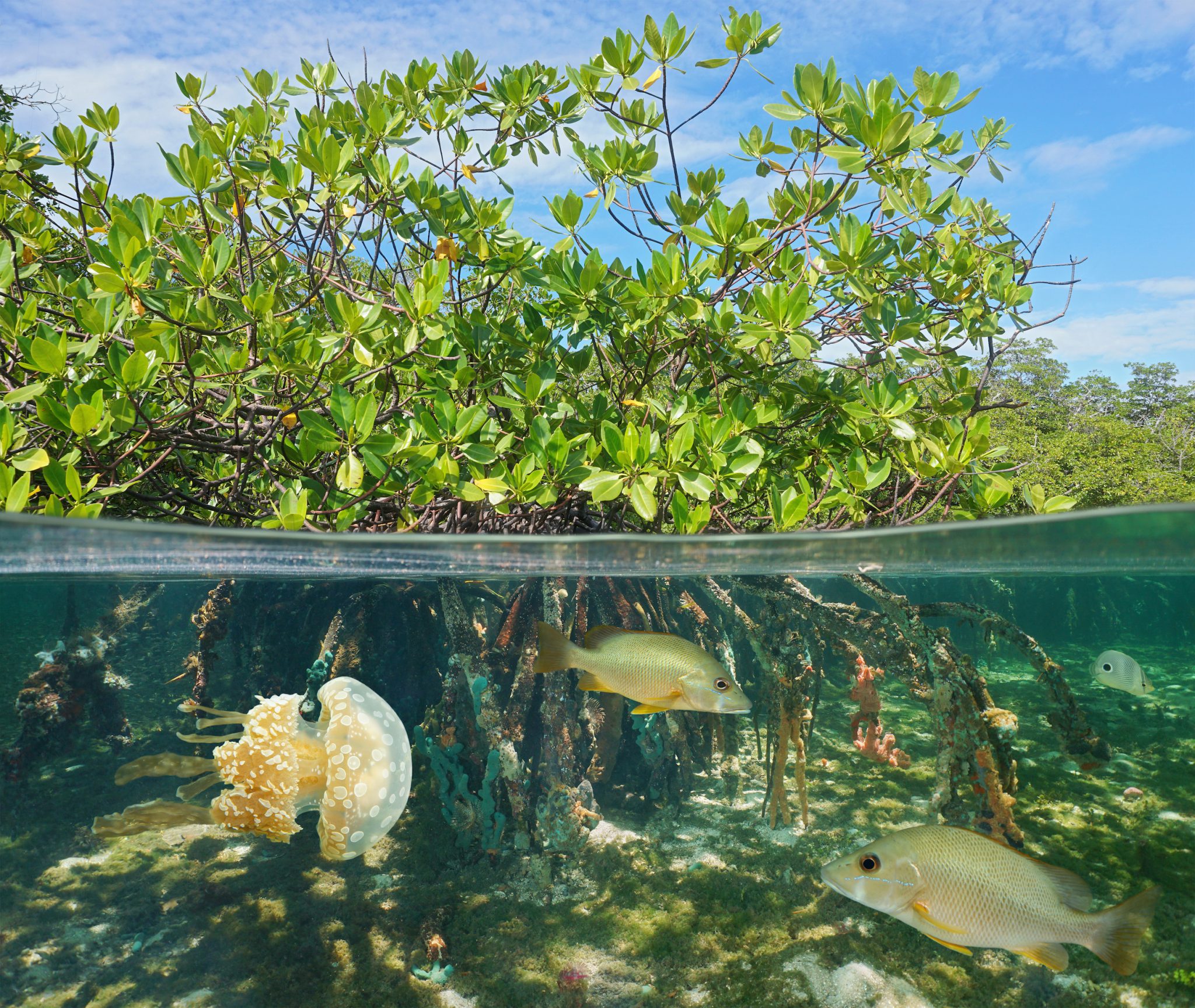
What is a Carbon Offset Program?
Before we get into the best carbon offset programs for ocean lovers, let’s first explore what a carbon offset really is. The definition is in the name – it is something, like a certificate or credit you can buy, that diminishes or balances the effect of emitting carbon in the atmosphere.
But how do carbon offsets work? Carbon offsets can be bought and sold in a carbon market, and the money for offsets go to projects that capture and store carbon. For example, companies can purchase carbon offsets that support regenerative farming to help reduce their carbon footprint and meet their carbon reduction goals. Ideally, the equal amount of offsets purchased will reduce, store, or avoid the carbon dioxide emitted.
On an individual level, if you want to reduce the carbon footprint of a future flight, you can buy carbon offsets that protect blue carbon ecosystems, like mangroves, wetlands, and seagrass. Your purchase will fund local and global environmental projects and offset your carbon footprint!
Do Carbon Offsets Work?
Do carbon offsets work? There are some challenges with carbon offsets worth mentioning. First, it is difficult to verify any given program’s environmental benefits. More research is needed to improve and standardize methods of measuring carbon captured in various ecosystems and projects. Additionally, sometimes more offsets are sold than the amount of carbon they reduce.
However, these challenges shouldn’t deter you from purchasing carbon offsets. Carbon offsets and the carbon market are relatively new, so universal standards are still being worked out. You should review programs with a critical eye. A good rule of thumb is to buy offsets that have been authenticated by a third-party certification program. Oversight and clear communication are important components to look for.
But yes, if used correctly, carbon offsets do work. They incentivize funding for restoration projects and contribute to the reduction of the amount of carbon dioxide in the atmosphere!
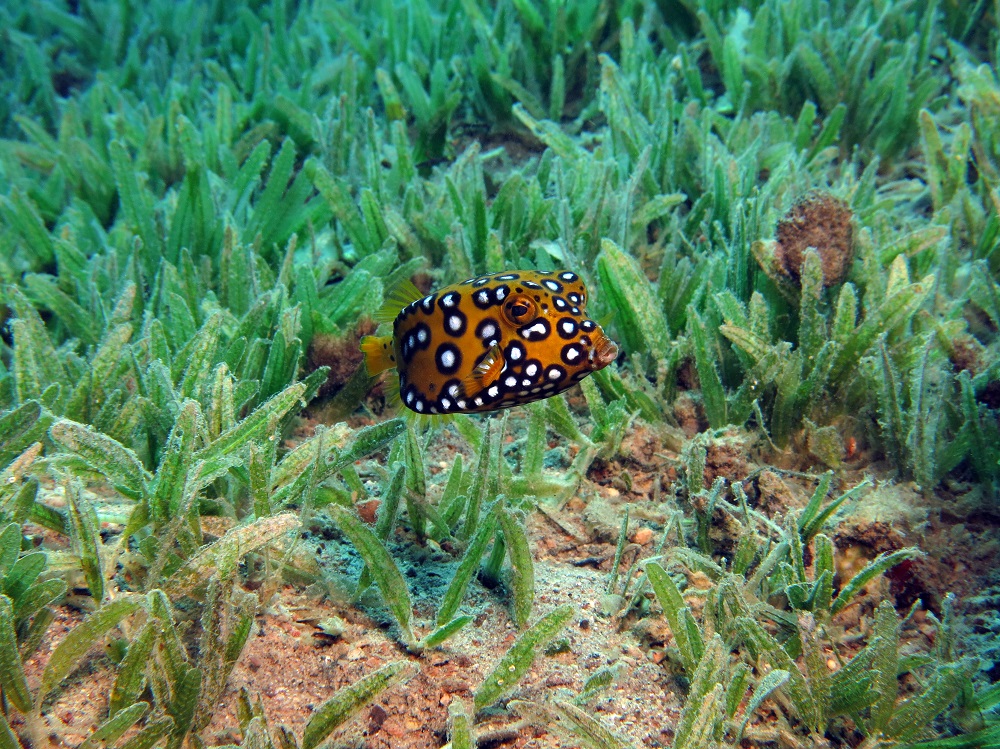
The Best Carbon Offset Programs
Explore these examples of carbon offset programs to offset your carbon footprint:
1. PADI Travel with The Ocean Foundation
Want to offset your carbon from travel to your next dive destination? If yes, visit PADI Travel! When booking your next dive adventure through PADI Travel, you can contribute to The Ocean Foundation at checkout. PADI Travel supports The Ocean Foundation’s SeaGrass Grow Program to conserve seagrass and mangroves. These ecosystems, namely seagrasses, mangroves and salt marshes, are fantastic at removing and storing atmospheric carbon, also called blue carbon. Mangroves and salt marshes are estimated to remove up to 10 times more carbon than tropical rainforests. Supporting programs like SeaGrass Grow Program can also promote habitat restoration and protect habitats. All in all, these efforts create more areas that remove and store carbon and prevent the release of stored carbon. So get ready to offset the carbon emissions from your next dive adventure with PADI Travel.
2. Wren
Wren is a Public Benefit Corporation that provides a subscription for customers to fund climate solutions. You sign up, calculate your carbon footprint, then start a monthly subscription to fund carbon solutions and offset your carbon footprint! Wren offers four different types of climate solutions to contribute to – carbon removal technology, tree planting, policy, and conservation. Take a look at their website and explore how they choose their projects as well as their FAQ page.
Ready to offset carbon from your everyday life or from your next dive adventure? Book a trip through PADI Travel and choose to offset carbon through the SeaGrass Grow program!
